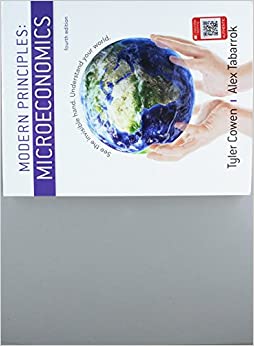Question
Ted is an eight-year-old boy who loves Pokmon cards and Lego minifigures. His father found a website where Ted can trade cards for minifigures (and
Ted is an eight-year-old boy who loves Pokmon cards and Lego minifigures. His father found a website where Ted can trade cards for minifigures (and vice versa) at a rate of one card for two minifigures. His preferences are represented by u(x1,x2) = x1 x23, where x1 stands for cards and x2 stands for minifigures. Assume both goods are perfectly divisible. a. Draw the budget constraint assuming Ted has an endowment of 5 cards and 6 minifigures, i.e. (1,2) = (5,6). b. Given the budget constraint in part a, find Ted's optimal bundle. c. Is Ted a net buyer of net seller of cards? What about minifigures? d. Assume Ted trades to get to the optimal bundle in part b. Imagine Ted visits the website two months later and learns each minifigure can now be traded for two cards. Draw the new budget constraint. Notice that the bundle in part b is Ted's new endowment. e. Given the new budget constraint in part d, find the new optimal bundle. f. Relative to the optimal bundle in part b, is Ted now a net buyer or net seller of cards? What about minifigures?
Step by Step Solution
There are 3 Steps involved in it
Step: 1

Get Instant Access to Expert-Tailored Solutions
See step-by-step solutions with expert insights and AI powered tools for academic success
Step: 2

Step: 3

Ace Your Homework with AI
Get the answers you need in no time with our AI-driven, step-by-step assistance
Get Started


